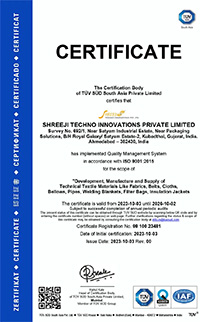Due to its crucial role in the production of textiles, silicone technology has revolutionized the textile industry. The modern discovery of silicone technology empowers textile producers to produce intelligent, high-performance, and functional textiles that can meet customer demands. The world of coated textiles is being upended by silicone chemistry, which has created a performance fabric that resembles leather in appearance and feels but is entirely different.
When searching for environmentally friendly coated textiles or leather substitutes, polyurethane and PVC-coated materials are no longer your sole choice. Silicone-coted fabrics are not only incredibly strong, but also have a contemporary appearance and feel, are solvent-free, and provide an environmentally friendly solution.
High-end products including outdoor furniture, car interiors, medical equipment, and athletic goods employ them to make performance fabrics.
Additionally, silicone coatings are safe for the skin and don’t include any dangerous substances like phthalates or solvents. Since silicones are simple to work with, methods can be improved to use less total energy and/or material.
Why Silicone?
Silicones’ practical advantages include:
-
- Solventless
- UV and ageing resistance
- Resistance towards fire and heat
- Temperatures both high and low don’t affect flexibility
- Good resistance against abrasion
- Long-lasting adherence to a range of substrates
Silicone elastomers are a perfect material to use in conjunction with coated textiles because they make it possible to build composites out of several layers, each of which adds distinct qualities important to the performance, feel, and appearance on top of your preferred substrate. TCS products are specially selected and constructed to give excellent performance based on your intended end application.
The eco-friendliness of Silicone
Making an environmentally conscious decision by using silicone coated fabrics in your design is another benefit. Silicones are a resilient substitute for traditional plastics that protects the environment. Silicones are altering the way you see and develop high-performance coated fabrics, offering features like water and UV resistance, heat and fire protection, and eco-friendliness.
Conclusion
Silicone has influenced our lives in a variety of ways, and it may be found in a number of shapes. They are utilized for both commercial and fashion fabrics. For adhesives, bonding agents, textile coatings, lace coatings, and seam sealers, materials like elastomers and rubbers are employed. In addition to fiber lubricants and process aids, fluids and emulsions are employed for fabric finishes.
The world’s industrial fabric manufacturers now have access to silicone technology to create specialized textiles and apparel that fully meet the practical requirements of contemporary lifestyles. Silicone technology is assisting textile makers in developing practical materials and high-performance textiles, regardless of whether the consumer is stylish, seeks comfort, or is cost-conscious.





